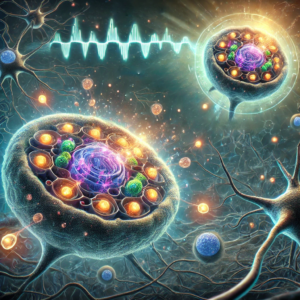Biohackers Examine Rapamycin as a Potential Drug for Longevity and Improved Healthspan

Interest in rapamycin (Rapa) is growing fast as a possible new drug for longevity. Image by Rigby40
- Rapamycin, an FDA-approved medication used to suppress the immune system, shows potential as a serious anti-aging drug for longevity.
- Health enthusiasts (biohackers) and some scientists are using rapamycin to reduce aging symptoms despite the lack of human trials.
- Rapa’s anti-aging properties are linked to its ability to obstruct cellular growth and maintenance pathway (mTOR), a key regulator of lifespan and aging.
- Rapamycin’s off-patent status limits research funding and official approvals.
New Drug for Longevity Gets Health Hackers Buzzing
The drug rapamycin is taking the health world by storm, but it’s an old drug with a new role. For the past 20 or so years, its job has been to stop the immune system from attacking transplanted organs. Now, it seems this special compound may have many more secrets to reveal. Scientists and everyday people interested in health (biohackers) are exploring Rapa’s anti-aging potential. Animal studies suggest that the way Rapa tinkers with a cell process called mTOR may slow aging. The mTOR pathway is important for healthspan and lifespan.

So, where’s the catch? While studies on animals show promise, Rapa’s anti-aging potential lacks trials on humans. Plus, the drug is off-patent, meaning there’s no prospect of making huge profits. For now, funding for large-scale studies is scarce, leaving this potential fountain of youth mostly untested.
This table sums up the drug’s possible benefits and challenges to date.
| Aspect | Description |
|---|---|
| Current Use | Suppresses immune systems in transplant patients |
| Potential Use | Anti-aging properties, reducing symptoms of aging |
| Evidence | Promising results in animal studies (mice, yeast, dogs, worms, primates) |
| Mechanism | Inhibits the mTOR pathway, a key regulator of lifespan and aging |
| Challenges | Lack of “official” human trials, difficulty finding optimal dose for people, unknown potential side effects |
| Probable Side Effects | Reproductive harm, insulin resistance, increased infection risks |
| Approval Status | Not approved by the FDA for its anti-aging properties, generic status limits financial incentives for human trials |
Beyond Prescriptions and the Anti-Aging Hype
Rapamycin has gained a lot of attention, thanks largely to longevity researchers and celebrity doctors. These groups argue, based on animal studies, that it could be a game changer. They are not only talking about longevity but also the quest to fend off age-related diseases. Still, the FDA does not consider aging a disease, and it’s technically correct. It’s also the reason the FDA will not approve rapamycin as a drug for longevity treatment. That hasn’t deterred health enthusiasts, who have taken matters into their own hands.

Many animal studies of the drug have seen it reduce aging symptoms in various species. These include simple lifeforms like yeast and worms but also mice, dogs, and primates. Researchers have also tested Rapa alongside other drugs with longevity claims. So far, nothing else has come close, leaving rapamycin in a league of its own.
Rapa: Beyond Easter Island – Potential & Challenges

Rapamycin is a weird molecule found in dirt germs on the remote Easter Island. It wasn’t always a medicine. It was sometime after researchers collected soil samples that a scientist noticed it could calm the immune system. Doctors have used Rapa for over two decades to lessen the risk of organ rejection in transplant patients. But now, some experts, like Dr. Peter Attia, think it might also be the key to living longer and healthier lives. It has worked by messing with a tiny cellular process in all sorts of creatures, so why not humans?
This exotic molecule, found only on an isolated scrap of land in the middle of the ocean, acts almost like a switch that inhibits a very specific cellular mechanism that exists in nearly everything that lives,
said Dr. Peter Attia in his book Outlive: The Science and Art of Longevity.”
Balancing Benefits and Risks
There are reasons why rapamycin is not already accepted as a drug for longevity treatments. Figuring out the perfect dose for humans is tricky as Rapa may trigger nasty side effects in some people. The most likely of these mess with fertility and affect how the body handles blood sugar (glucose). So, while Rapa could be the next big thing in anti-aging, there’s still a lot of research remaining. That doesn’t mean it won’t happen; it just means it’s not ready yet.
Future Directions and Potential
Everyone’s talking about extending healthspan these days, which is fueling interest in alternative longevity therapies. This growing interest is as much about preventing age-related ailments as it is about living longer. That’s right; a drug that extends lifespan must also offer a better quality of life for it to appeal. The potential of rapamycin for extending healthspan and quality of life is significant.
Despite the challenges, Daniel Tawfik, founder of Healthspan, advocates for new research. The funding to explore these benefits, he suggests, could come through grants.
Final Thoughts: Rapa – The New Longevity Treatment?
Few will doubt that rapamycin has become a fascinating topic in the world of longevity research. Its first known use to help prevent organ rejection is invaluable and will continue. The new focus, though, is Rapa’s potential as a drug for longevity treatment. Its anti-aging properties in animal studies have captured the imagination of scientists and biohackers alike.
Significant hurdles remain, however. Human trials are lacking. Also, finding the optimal dosage for people remains a challenge. The risk of severe side effects in some people needs more consideration, too. Advocates of longevity are not going to let obstacles obstruct progress. And why would they when Rapa treatment could become a serious tool for promoting a longer, healthier life?





